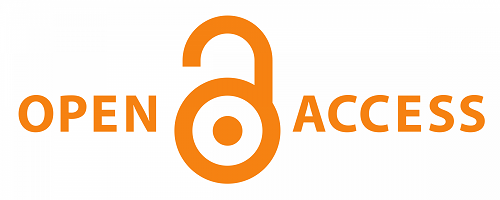The Trend of Loanwords Among Generation Z: Between Language Style and Social Identity
Kata Kunci:
Loanwords, Social Media, Language Style, Social IdentityAbstrak
Language functions not only as a medium of communication but also as a vital marker of social identity and cultural affiliation. Among Generation Z, the adoption of loanwords has become a prominent linguistic phenomenon, reflecting the complex interplay between global cultural flows and local identity construction. This study investigates the trend of loanwords in the language practices of Indonesian Generation Z, focusing on how borrowed terms are integrated into everyday speech and social media discourse as expressions of style, identity, and community belonging. Utilizing a qualitative descriptive method, this research combines literature review and observations from various social media platforms, including Facebook, Instagram, TikTok, and Twitter. The findings reveal that Indonesian Gen Z actively incorporates loanwords from English, Korean, Japanese, and other languages, often transforming them through processes such as blending, clipping, and spelling modifications to fit local linguistic patterns. Words like healing, vibes, and oppa exemplify how loanwords acquire new cultural nuances and social functions in Indonesian contexts. Moreover, these linguistic choices serve as tools for signaling group membership, projecting cosmopolitan identities, and navigating digital social spaces. The study concludes that loanwords among Indonesian Generation Z are not merely linguistic borrowings but dynamic elements that contribute significantly to personal expression, social identity, and cultural interconnectedness in the digital age.
Unduhan
Referensi
Almeida, P., Campos, L., & Serrano, A. (2020). Digital communication and youth linguistic practices: Identity, creativity and language change. Journal of Language and Communication, 7(2), 45–60.
Grandez, M. B., Ablero, M. C. P., Lasala, R. M., Gomez, M. T. G., & Bonganciso, R. T. (2023). The Morphological Structure of Generation Z Slang in Social Media. Journal of English as a Foreign Language Teaching and Research, 3(2), 15–28.
Handayani, R., & Nugroho, A. (2023). The use of English loanwords in Indonesian youth slang on social media. Journal of Language and Society, 12(1), 45–58.
Labov, W. (1982). Language in the Inner City: Studies in the Black English Vernacular. University of Pennsylvania Press.
Rajagukguk, K. (2022). Analysis of slang words through Facebook media during COVID-19 in class VIII students of SMP HKBP SIDORAME. Repository UHN.
Rezeki, T. I., & Sagala, R. W. (2019). Slang words used by millennial generation in Instagram. Jurnal Serunai Bahasa Inggris, 11(2), 74–81.
Rizky, N. A. (2022). The impact of Korean pop culture on Indonesian youth language. Indonesian Journal of Linguistics, 8(2), 123–137.
Romero, R. D., Cortezano, G. P., Manaig, K. A., Yazon, A. D., & Tesoro, J. F. B. (2023). A phenomenological investigation of senior high school learners with low English language proficiency. Journal of Language Education Studies, 4(1), 1–15.
Tagliamonte, S. (2012). Variationist Sociolinguistics: Change, Observation, Interpretation. Wiley-Blackwell.
Victor, S. E. (2025). Language Variation: A Study of Gen Z Language on Selected Social Media Platforms. Nigerian Journal of Arts and Humanities, 5(1), 10–18.








